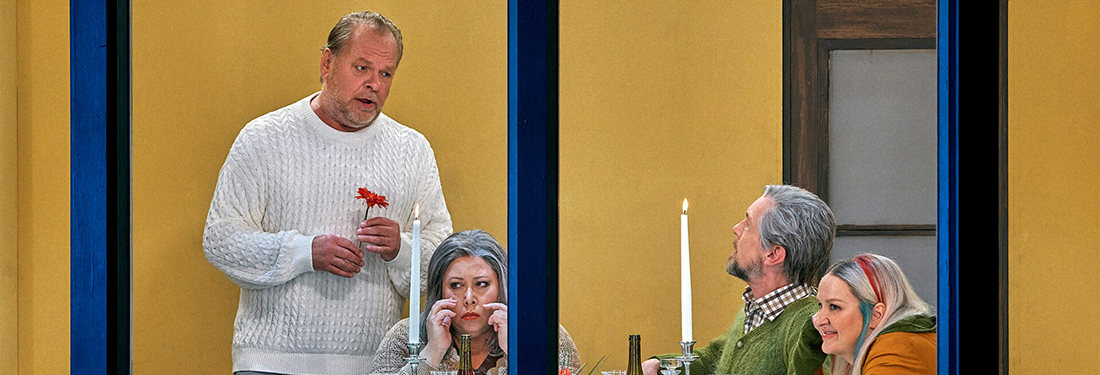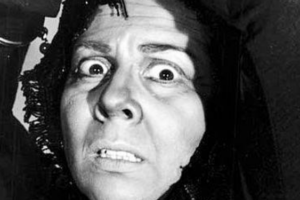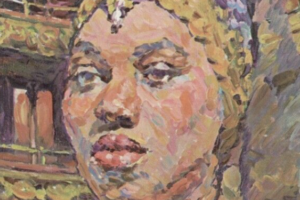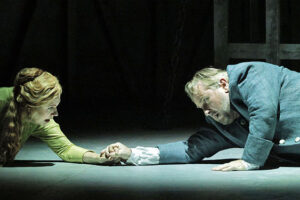

These typos – so obvious they were simply funny – seem an apt metaphor for the opera itself, which was messy, chaotic, uneven, and very rough around the edges, yet ultimately rather charming.
One of the main problems with My Undying Love was that it did not appear to know what audience it was pitching to. For the most part, Shiflett’s opera, with its light-hearted fairy-tale plot and nursery-rhyme-like ditties, seemed to be aimed at young children; yet the 8pm curtain, relatively long run time (one act, 80 minutes), and moments of Buñuelian surrealism all suggested an adult audience.
It did not help that the plot of My Undying Love was strikingly similar to the plot of Ravel’s L’enfant et les sortilèges: after a child gets into an argument with her long-suffering mother, the child’s toys come to life, transforming the child’s bedroom into a kind of pastoral fantasy world.
However, while Ravel’s opera is a profound meditation on humanity’s propensity for destruction and selflessness, Shiflett’s opera had no such moral lessons, and it was often difficult to figure out the point of the opera’s dream-like episodes.
Similarly, while Ravel’s characters are drawn in vivid musico-dramatic portraits, Shifflet’s music lacked the kind of playful variety necessary to distinguish between such eccentric characters: musically, each anthropomorphic toy sounded much like the next.
Indeed, the score was stylistically rather noncommittal: moments of jazzy pastiche fizzled out as quickly as they begun and bursts of lyricism were cut short by long passages of homogenous recitative.
The opera had an approachable diatonicism, with modulations tending toward nearby keys; however, tunes were few and far between, such that the score sounded like a series of mismatched Mozartean phrases in search of melody.
Shiflett’s three-piece orchestra felt, on the whole, underutilized, often confined to rather unvarying melody-and-accompaniment textures, and the timbral characteristics of the piano-cello-clarinet combo could certainly have been more imaginatively exploited.
Dramatically, My Undying Lovehad a similar tone to Menotti’s children’s operas, marked by a warm, gentle humor, an upbeat quirkiness, and flashes of wistful reflection. Yet Menotti’s operas are shot through with cold-war paranoia and Italianate passion, while Shiflett’s opera remained in rather safe territory throughout, with few moments of danger or emotional upheaval.
However, parts of My Undying Love were unexpectedly dark: for example, the child plays a game with her teddy bear where both pretend to die a long and painful death (at one point in the opera, the bear dies for real, the plot taking a yet darker turn).
At another point, the Witch (the villain of the child’s toy world) attempts to seduce the (married) Robin; however, the (formerly deceased) teddy bear rises from his grave and secretly swaps places with the Robin, so that the Witch suddenly finds herself locked in an embrace with the wrong animal. This seemed a particularly uncomfortable bed trick for a children’s opera, designed to humiliate the Witch to the extent that it bordered on sexual assault by deception.
It was this unevenness of tone, paired with a relatively prosaic musical and dramatic language, that dulled the overall impact of My Undying Love. Yet, if My Undying Lovewere repackaged in a cuter, cuddlier form, cut down to 45 minutes, and targeted more explicitly toward children, the opera would make a rather lively introduction to the artform for very young audiences.
If the opera itself failed to wow, its six-strong cast delivered a few standout performances: Lianne Gennaco’s sprightly turn as the child bought an earnest energy to Shiflett’s score, while Rachel Arky, playing the child’s toy milkmaid, sang with a lusty radiance.
The absolute star of the show, however, was Michelle Seipel who brought a delightful sense of mischief to the role of the Witch. Seipel’s bright, clear voice, matched with an endlessly expressive command of the libretto and a dancer’s command of the stage, injected life into a character who was otherwise confusingly written.
The men were, on the whole, less consistent, overstretched vocally and lacking dramatic conviction; however, the doughy-voiced Seth Gilman seemed to channel Winnie the Pooh in his charming performance as the teddy bear.
The cast were let down, in part, by some very lackadaisical direction: Andrew Joffe’s staging left much of the vast, sparse performance space unused and the singers languishing in awkward, torpid lines at the very front of the stage.
On the whole, My Undying Love made for a perfectly delightful night of entertainment despite its flawed writing and shaky delivery. If you are looking for a polished, hard-hitting evening of contemporary opera, perhaps give this one a miss; however, if you are looking for a quaint, accessible, warm-hearted diversion, My Undying Love may just be for you.
Photo by Yuri Kalina.
























Comments